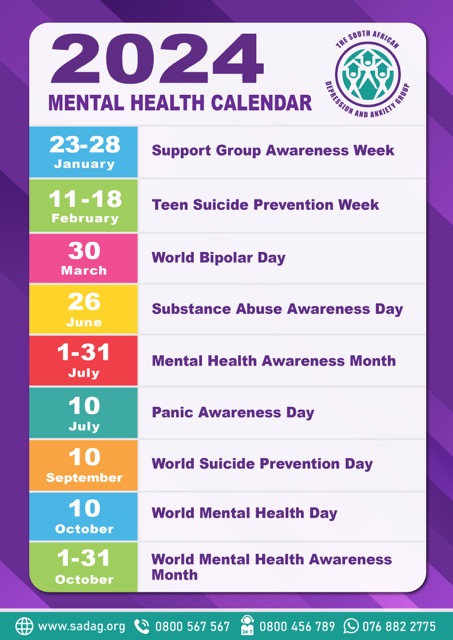By Jeff Szymanski, PhD
In my previous blog post I described the diagnostic criteria for obsessive compulsive disorder (OCD). A person diagnosed with OCD experiences obsessions (thoughts, images, or impulses that occur over and over again and feel out of the person’s control) and compulsions (repetitive behaviors or thoughts that a person engages in to neutralize, counteract, or make their obsessions go away). In addition, the obsessions and compulsions are time consuming (at least one hour per day), and they get in the way of important activities the person values, such as working, going to school, or spending time with friends.
Though OCD is usually associated with hand washing and fear of catching a disease (á la Howard Hughes), there are actually many different “types” or themes seen in OCD. I want to describe some of these commonly seen obsessions. Again, the most commonly discussed obsession is a fear of germs and contracting a disease. Individuals struggling with these fears avoid touching surfaces that others have come in contact with — door knobs, light switches, railings, etc. They might also become anxious when seeing something that might resemble body fluids from another person. For example, a red spot on a restaurant table is associated with blood (rather than a possible wine stain). Diseases that people with OCD become preoccupied with typically include HIV, herpes, and cancer. Some individuals are also concerned with environmental contaminants — asbestos or radiation — or chemical contaminants in general (e.g., fear of getting sick from too many chemicals in their shampoo).
Aren’t these things we all worry about from time to time? Of course. Have you seen all of the hand sanitizer dispensers popping up everywhere? Even if you don’t have OCD, maybe you get a cough that you can’t shake and you begin to worry something is wrong. The thought of throat cancer might cross your mind. However, fleeting thoughts and worries are not what I am describing. For individuals with OCD, these thoughts are present for hours at a time, day after day, along with intense feelings of anxiety. It is always important to keep this piece in mind.
A second type of obsession seen in individuals with OCD is a fear of harm. Typically this is a fear of being responsible for something terrible happening because the individual feels he or she wasn’t being careful enough. For example:
· “Did I remember to turn off the stove? If I left it on, it could burn the house down.”
· “I saw a broken bottle on the road back there. If I don’t go and pick it up and someone ran over it and got into an accident, I would be to blame.”
Most of us have gone back to check our front door or the door of our cars to make sure they are locked. Going back 20, 50, 100 times, as is seen in people with OCD, is not the norm for the rest of us, however.
In his book, Imp of the Mind, Lee Baer describes another group of obsessions common in people with OCD: taboo thoughts. What are the kinds of thoughts you would most like not to have? For people with OCD, these are the thoughts that crowd their minds:
· “What if I lost control and turned my car into oncoming traffic?”
· “If I looked at that kid for too long does that mean I am a pedophile?”
· “What if I go to church and have a blasphemous thought? Will I go to hell?”
Sexual, violent and blasphemous thoughts are a form of OCD that is not often talked about and was poorly understood for many years. In some cases, there are no overt compulsions as they are often done inside one’s head: for example, replacing a bad thought with a good thought or mentally reviewing to make sure there weren’t any unwanted thoughts. For individuals with this type of OCD, sexual or violent images or thoughts come to one’s mind, leading him or her to think that if they had this thought it must mean something. “If I am having a thought about violence, does this mean I want to become violent?” This line of thinking plagues individuals with OCD as the core of this disorder is uncertainty. “I’ve never done a violent thing in my life. I don’t want to do anything violent, but what if I somehow lost control?” Think about the worst possible thing you could do. Something that if you followed through with it, you would feel like the worst person you could imagine. Now imagine that you cannot get this thought out of your head. It just keeps playing over and over again, and you can’t convince yourself that you might not somehow still go through with it.
Another type of obsession seen in individuals with OCD is perfectionism. For the general public the association between OCD and perfectionism is strong. Individuals struggling with these obsessions are concerned with evenness, exactness and symmetry. They become preoccupied with needing to know every detail about every matter and feel that they should have a 100% perfect memory for everything they come across. In many cases, these individuals spend enormous amounts of time trying to avoid making a mistake or letting anyone see any flaws. In addition, sometimes this kind of insistence on perfectionism contributes to problems with hoarding.
The last group of obsessions commonly seen in individuals struggling with OCD include traditional superstitions: good and bad numbers or colors, not driving by cemeteries, or avoiding black cats for fear that something bad might happen to themselves or a loved one. If they see the number six, for example, they may feel that this is somehow associated with the devil (“666″) and therefore something evil. As a result, the urge to “undo” this number becomes overwhelming.
When it comes to trying to understand OCD or relate to it in some way, people make the mistake of looking at the compulsions. Compulsive behavior is compelling. However, to focus on compulsions is to miss the real story. Imagine a time in your life where you felt intense, excruciating anxiety: thoughts and feelings swirling around your head about maybe getting sick, losing a loved one, or worrying about your own personal safety. We all have bouts of this type of anxiety from time to time. Now imagine that you couldn’t turn it off. There was no escape. To truly understand why someone with OCD does what they do, connect with that part of you that experienced a feeling so intense you would be willing to just about anything to get rid of it. Then you will begin to understand what it might be like to have OCD.
Dr. Jeff Szymanski received his PhD in Clinical Psychology from Northern Illinois University in 1997, and has a long track record of teaching and training. He is the author of the upcoming book “The Perfectionist’s Handbook,” and is the Executive Director of the International OCD Foundation.


























